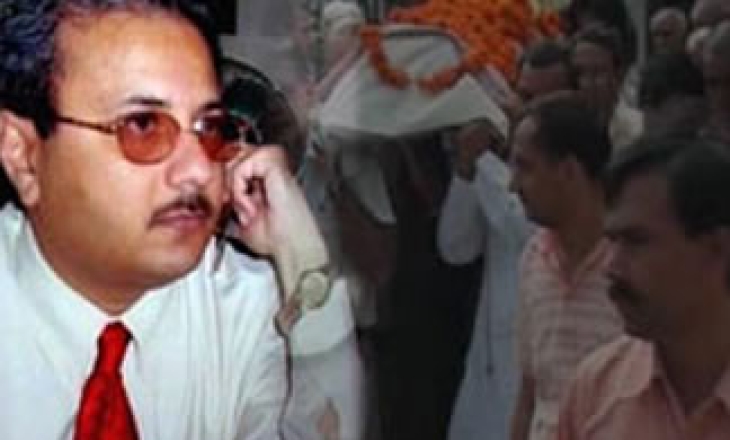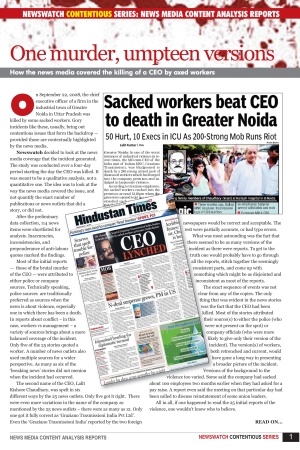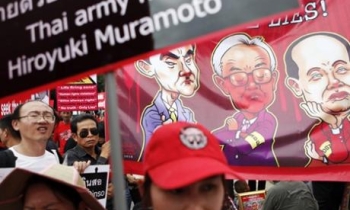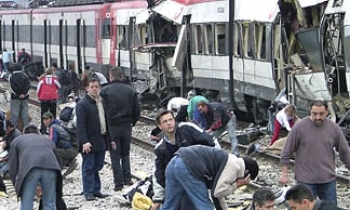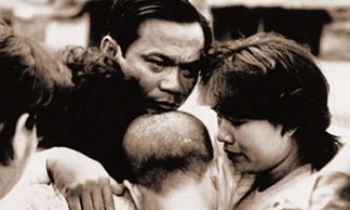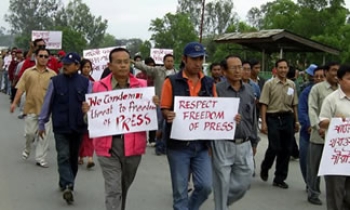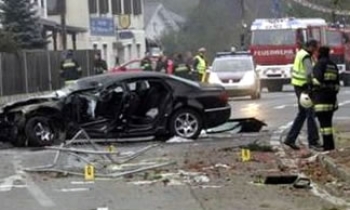On September 22, 2008, the chief executive officer of a firm in the industrial town of Greater Noida in Uttar Pradesh was killed by some sacked workers. Gory incidents like these, usually, bring out contentious issues that form the backdrop — provided those are contextually highlighted by the news media.
Newswatch decided to look at the news media coverage that the incident generated. The study was conducted over a four-day period starting the day the CEO was killed. It was meant to be a qualitative analysis, not a quantitative one. The idea was to look at the way the news media covered the issue, and not quantify the exact number of publications or news outlets that did a story, or did not.
After the preliminary data collection, 114 news items were shortlisted for analysis. Inaccuracies, inconsistencies, and preponderance of anti-labour quotes marked the findings.
Most of the initial reports — those of the brutal murder of the CEO — were attributed to either police or company sources. Technically speaking, police sources are traditionally preferred as sources when the news is about violence, especially one in which there has been a death. In reports about conflict – in this case, workers vs management – a variety of sources brings about a more balanced coverage of the incident. Only five of the 25 stories quoted a worker. A number of news outlets also used multiple sources for a wider perspective. As many as six of the ‘breaking news’ stories did not menion when the incident had occurred.
The second name of the CEO, Lalit Kishore Chaudhary, was spelt in six different ways by the 25 news outlets. Only five got it right. There were even more variations in the name of the company as mentioned by the 25 news outlets – there were as many as 12. Only one got it fully correct as ‘Graziano Trasmissioni India Pvt Ltd’. Even the ‘Graziano Trasmissioni India’ reported by the two foreign newspapers would be correct and acceptable. The rest were partially accurate, or had typo errors.
What was most astounding was the fact that there seemed to be as many versions of the incident as there were reports. To get to the truth one would probably have to go through all the reports, stitch together the seemingly consistent parts, and come up with something which might be as disjointed and inconsistent as most of the reports.
The exact sequence of events was not clear from any of the copies. The only thing that was evident in the news stories was the fact that the CEO had been killed. Most of the stories attributed their source(s) to either the police (who were not present on the spot) or company officials (who were more likely to give only their version of the incident). The version(s) of workers, both retrenched and current, would have gone a long way in presenting a broader picture of the incident.
Versions of the background to the violence too varied. Some said the company had sacked about 100 employees two months earlier when they had asked for a pay raise. A report even said the meeting on that particular day had been called to discuss reinstatement of some union leaders.
All in all, if one happened to read the 25 initial reports of the violence, one wouldn’t know who to believe.

